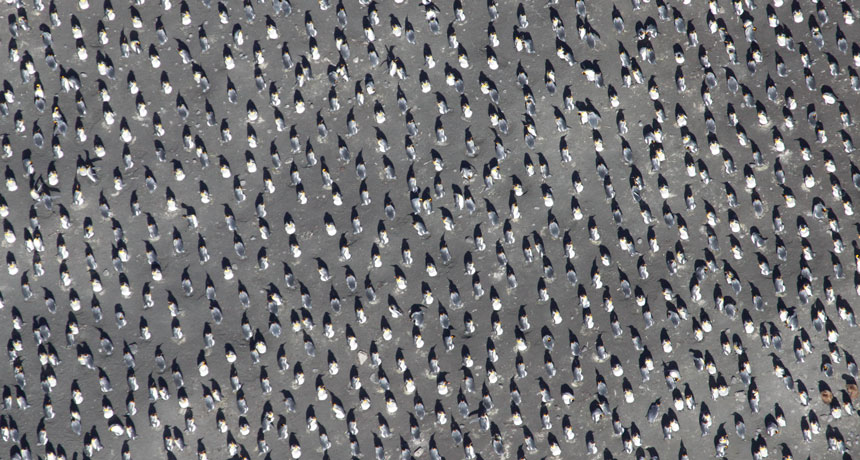aerial Of or taking place in the air.
Atlantic One of the world’s five oceans, it is second in size only to the Pacific. It separates Europe and Africa to the east from North and South America to the west.
behavior The way something, often a person or other organism, acts towards others, or conducts itself.
birds Warm-blooded animals with wings that first showed up during the time of the dinosaurs. Birds are jacketed in feathers and produce young from the eggs they deposit in some sort of nest. Most birds fly, but throughout history there have been the occasional species that don’t.
breed (verb) To produce offspring through reproduction.
climate The weather conditions that typically exist in one area, in general, or over a long period.
climate change Long-term, significant change in the climate of Earth. It can happen naturally or in response to human activities, including the burning of fossil fuels and clearing of forests.
extinction The permanent loss of a species, family or larger group of organisms.
force Some outside influence that can change the motion of a body, hold bodies close to one another, or produce motion or stress in a stationary body.
habitat The area or natural environment in which an animal or plant normally lives, such as a desert, coral reef or freshwater lake. A habitat can be home to thousands of different species.
kin Family or relatives (sometimes even distant ones).
liquid A material that flows freely but keeps a constant volume, like water or oil.
model A simulation of a real-world event (usually using a computer) that has been developed to predict one or more likely outcomes. Or an individual that is meant to display how something would work in or look on others.
molecule An electrically neutral group of atoms that represents the smallest possible amount of a chemical compound. Molecules can be made of single types of atoms or of different types. For example, the oxygen in the air is made of two oxygen atoms (O2), but water is made of two hydrogen atoms and one oxygen atom (H2O).
penguin flightless black-and-white bird native to the far Southern Hemisphere, especially Antarctica and its nearby islands.
physicist A scientist who studies the nature and properties of matter and energy.
physics The scientific study of the nature and properties of matter and energy. Classical physics is an explanation of the nature and properties of matter and energy that relies on descriptions such as Newton’s laws of motion.
population (in biology) A group of individuals from the same species that lives in the same area.
territorial (in biology) An adjective for organisms that try to keep others of their species away from an area they control.
2-D Short for two-dimensional. This term is an adjective for something in a flat world, meaning it has features that can be described in only two dimensions — length and width.








